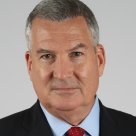A four-way race on Vancouver Island.

Fierce two-way races in suburban Toronto.
Hardly a race at all in Alberta, Saskatchewan or Montreal.
Welcome to Canada’s 43rd general election, which, perhaps more than ever, will actually be a collection of as many as a dozen regional races, each with its own dynamics, its own set of issues and its own set of credible candidates.
WATCH BELOW: Federal election campaign to officially begin Sept. 11

Only two parties — the Liberals and the Conservatives — have any realistic chance of emerging on Oct. 21 with enough seats to lay claim to forming a government and, as the short 40-day campaign officially gets underway Wednesday, the incumbent begins with the advantage.
Justin Trudeau’s Liberals begin the race with 177 seats, and while the Liberals are likely to lose some seats in Atlantic Canada and in the west, the current state of play is such that they can expect to keep close to all of the 76 seats they now hold in Ontario while picking up seats in Quebec.
The Trudeau campaign is blessed, at the outset, to have a New Democratic Party that is as weak as it’s been in decades. And while Elizabeth May’s Green Party may have its strongest campaign ever, it may not be enough to prevent the so-called progressive or left-of-centre vote from settling on the Liberals.
WATCH BELOW: New research suggests Liberal, Green support trending up, Conservative, NDP down in Atlantic Canada

Andrew Scheer’s Conservatives begin their march towards winning a majority of 169 seats or more with 95 already in their column. It’s difficult to imagine any one of those seats being at risk, the Conservative base being as solid, reliable and motivated as it is.
But it also seems to be the party with the most difficult path for growth.
- ‘Alarming trend’ of more international students claiming asylum: minister
- NBC, CBS polls show Harris gaining ground as election focus shifts to Trump
- TD Bank moves to seize home of Russian-Canadian jailed for smuggling tech to Kremlin
- ‘We have a responsibility:’ Trudeau urges global leaders to support pact for future
A sweep of Alberta’s 34 seats and a dominant performance in Manitoba and Saskatchewan, where a combined 28 seats are up for grabs, is almost assumed. But running up the score in the west, as the Conservatives seem certain to do, will matter little when the government will almost certainly be decided by Ontario — and, more specifically, by the ring of suburban seats around Toronto stretching from Oshawa to Burlington. (Toronto itself, of course, will be reliably red.) Here, the Conservatives are hobbled because enough voters associate Scheer with the tremendously unpopular Progressive Conservative Premier Doug Ford.

Get breaking National news
Trudeau, his MPs and Liberal Party advertising have for weeks been tying Scheer as tightly as they can to Ford. One of the keys to the campaign about to unfold will be the extent to which Scheer is able to wriggle free of the Ford chains holding him down.
In Quebec, Scheer can count on a solid performance from his team, but success there may yield two, three or four more seats than the 11 of 78 they now hold in that province.
WATCH BELOW: NDP leader Jagmeet Singh tries to woo Quebec voters

The Quebec story, at this point, will be one of Liberals, more than any other party, cashing in on the NDP collapse in that province. The NDP, at dissolution, held 14 seats in Quebec. They may hold none by day’s end on Oct. 21. Liberals could easily paint the island of Montreal red while the strengthening Bloc Québécois may pick up a few NDP seats outside Montreal.
In Atlantic Canada, the Liberals ran the table in 2015, winning all 32 seats in the four eastern provinces. They are unlikely to do that again, though they will almost certainly be the dominant party in the region once more.
Meanwhile, the Greens may surprise in New Brunswick, where the provincial wing of the party holds three seats, or even in P.E.I., where the provincial wing is the official Opposition to a Progressive Conservative premier.
But the big chance for the Greens is on the southern end of Vancouver Island, where the Greens already hold two seats and are looking to steal one, two and maybe three from Jagmeet Singh’s New Democrats. Elsewhere on the island, the Conservatives seek to assert the dominance the party had during the old Canadian Alliance days while the Liberals remain hopeful that vote splits among those three opponents could give them some opportunities for surprise pickups.
In the rest of B.C., the Conservatives appear to be on the ascent, and while the Liberals should finish the campaign with a strong presence in the province, they will have a tough task to defend all they have. The NDP, too, is more a defensive story in B.C., where it begins as the incumbent party in 12 ridings but without some key regional warriors like Nathan Cullen, Fin Donnelly and Murray Rankin, who have all retired.
WATCH (March 1, 2019): BC NDP MP Nathan Cullen won’t run in next election

David Akin is the chief political correspondent for Global News.









Comments